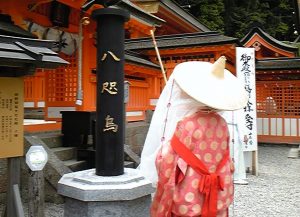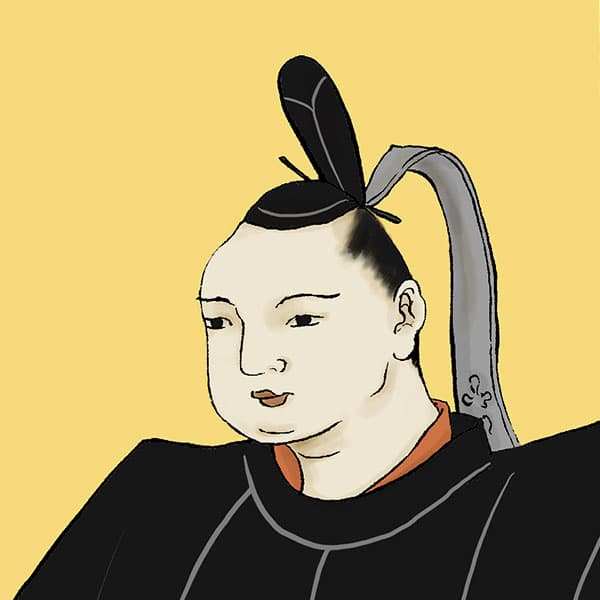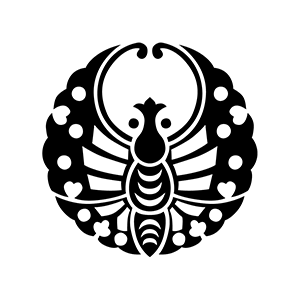- himeji domainRuled by prestigious families such as Terumasa Ikeda and the Sakai family.
- One of Japan's most famous castles, Himeji Castle served as the domain office of Himeji Castle throughout the Edo period. The Himeji domain was founded by Terumasa Ikeda, a military commander who served Oda Nobunaga, Toyotomi Hideyoshi, and Tokugawa Ieyasu, and was established in the Meiji era during the reign of the Sakai clan, the top of the feudal lords.

Himeji castleHimeji City, Hyogo Prefecture
| Tenshu | Existing castle tower|National Treasure Gojo |
|---|---|
| Other name | Shirasagi Castle |
| castle construction | 1346 |
| address | 68 Honmachi, Himeji City, Hyogo Prefecture |
- Access to Himeji Castle
- Approximately 20 minutes walk from the north exit of Himeji Station on JR West, Sanyo Shinkansen, Sanyo Main Line, Hime Shin Line, and Bantan Line.
HISTORYHimeji Castle, a representative example of early modern castles registered as a World Heritage Site
Himeji Castle is a flat mountain castle built around Himeyama and Sagiyama on the north side of Shikama District, Harima Province (currently Himeji City, Hyogo Prefecture). More than 80 buildings, including the castle tower, turrets, turrets, ridges, gates, and walls, built before the Edo period still exist, with 8 designated as national treasures and 47 as important cultural properties. In addition, in 1993, along with Horyuji Temple in Nara, it was designated as Japan's first World Heritage Site (cultural heritage), and its charm has become widely known around the world. Here, let's unravel the history of Himeji Castle.
- The beginning of Himeji Castle
- Himeji Castle is said to have its origins in 1333, when Northern Court military commander Norimura Akamatsu built a fort on Himeyama, and his son Norimura Akamatsu built a full-fledged castle.
However, this theory is controversial. What the Akamatsu clan built was just a small fort, and the full-scale construction was carried out by Shigetaka Kuroda and Motonaka Kuroda, the grandfather and father of Yoshitaka Kuroda (Kanbei), famously known as ``Gunshi Kanbei.'' That's what it means.
Currently, Himeji Castle's official website accepts the theory that the Akamatsu clan built the castle, which is the predecessor of Himeji Castle.
After that, the Akamatsu clan plotted to kill the 6th Shogun Yoshinori Ashikaga during the reign of Mitsuke Akamatsu and committed suicide (Kakichi Rebellion).
After Himeji Castle lost its owner, Mitsusuke Akamatsu, who later served as the commander-in-chief of the Western Army during the Onin War, came to be in charge of the castle.
Furthermore, when the Onin War broke out, Masanori Akamatsu, the ninth generation of the Akamatsu clan, captured Himeji Castle and regained his territory.
After that, Himeji Castle was placed in the custody of the Kodera clan, a branch of the Akamatsu clan, and their senior vassal, the Kuroda clan, and in 1580, Himeji Castle was presented to Hideyoshi Hashiba as his base for his invasion of China.
At this time, a three-story castle tower was built. From 1585, Sadaie Kinoshita became the lord of Himeji Castle and protected the castle for 16 years. - Himeji Castle in the Edo period
- After the Battle of Sekigahara occurred in 1600 and Tokugawa Ieyasu unified Japan, Himeji Castle was given to Terumasa Ikeda for his efforts in capturing Gifu Castle.
As the first lord of Himeji Castle, Terumasa Ikeda spent nine years undergoing major renovations to the castle. As a result, Himeji Castle took on its current appearance.
After that, Himeji Castle was lorded by several families, including the Ikeda family, the Honda family, the Matsudaira family, and the Sakakibara family, and after repeated expansions and renovations, the Sakai family served as the lord until the Meiji Restoration. - Himeji Castle after the Meiji period
- After the Meiji Restoration, Himeji Castle was temporarily placed under the control of the Ministry of War, but was soon given over to the private sector.
At this time, it once belonged to a private citizen, but soon became state-owned again. After becoming state-owned, Himeji Castle became an army barracks, and several buildings were demolished to make way for an infantry garrison.
Afterwards, the remaining castle towers and other structures began to deteriorate, but a movement to restore and preserve Himeji Castle began, led by Army Engineer Colonel Shigeto Nakamura. It was then decided that along with Nagoya Castle, the castle tower and turret would be preserved, and a large-scale repair work called the ``Meiji Great Repairs'' was carried out.
Later, Himeji Castle was handed over from the military to Himeji City and opened to the public in 1913. In 1927, it was designated as a historic site, and in 1931, it was designated as a national treasure under the National Treasure Preservation Law.
During the Pacific War, Himeji was bombed twice, but fortunately Himeji Castle escaped major damage. In addition, Nagoya Castle, which was preserved in the same way, was burnt down in an air raid in 1945.
In 1951, 8 buildings of Himeji Castle, including the castle tower, were designated as national treasures after being spared from war damage. Then, in 1956, a major restoration project called the Great Showa Restoration took place, which took eight years.
In the Heisei era, it was designated as a UNESCO World Heritage Site in 1993, and its popularity increased not only in Japan but also overseas. From 2009 to 2015, the castle tower underwent its third major restoration called the Great Heisei Repair, and in 2015 it had its grand opening in its current form. - Current Himeji Castle
- Today, Himeji Castle has 36 buildings that you can tour, including the castle tower and turret. In addition to recommended tour routes, the official website promotes the Himeji Castle Discovery App, which allows you to listen to explanations of various parts of the castle using your smartphone.
In particular, the Himeji Castle Discovery app is popular because it can be launched for free.
Additionally, some buildings, such as the To-no-yagura tower and the area around Adate, are only open to the public during special public viewings in the spring.
If you are interested, it would be a good idea to go during that time.
A castle festival is held every May, and you can see a variety of historical picture scrolls, including a procession of feudal lords.
In addition, the Yukata Festival is held every June, and tourists wearing yukata gather at Himeji Castle.
Himeji Castle is famous for its collaboration with cherry blossoms, and now it is lit up at night, and depending on the season, projection mapping is also held.
In addition, Himeji Castle is often used as a filming location for period dramas, and was featured as Edo Castle in the movie "Abarenbo Shogun" starring Ken Matsudaira.
Read biographies related to Himeji Castle
- Tadatsugu IkedaA regrettable death at a young age
- From the Sengoku period to the Edo period, many talented military commanders appeared and disappeared. Among them, the Ikeda family continued with Ikeda Tsuneoki, who served Oda Nobunaga, and Ikeda Terumasa, who served Toyotomi Hideyoshi and Tokugawa Ieyasu. After that, I will introduce Tadatsugu Ikeda.

History of Himeji Domain, with Himeji Castle as the domain office
| Domain office | Himeji castle |
|---|---|
| old area | Harima Kunishika Higashi District |
| stone height | 150,000 koku |
| Fudai/Tozama | Fudai |
| main lord | Mr. Sakai |
| Estimated population | 220,000 people (first year of the Meiji era) |
The first lord of the domain was Terumasa Ikeda, son-in-law of Tokugawa Ieyasu. After the country was transferred to his young grandson's generation, Honda Tadamasa, who was his successor, entered the book. After that, feudal lords such as the Matsudaira family, Sakakibara family, and Sakai family changed. Successive feudal lords held important positions in the shogunate, such as tairo and roju.
The charm of the World Heritage site "Himeji Castle" that is extremely popular around the world
When speaking of world-famous Japanese castles, the first thing that comes to mind is the World Heritage Site and national treasure Himeji Castle. Its graceful appearance, also known as the "White Heron Castle," has earned it first place in numerous castle-related rankings. The castle is also gaining popularity from overseas, with the number of foreign visitors expected to exceed a record high of 450,000 in 2023. This time, we will introduce the charms of Himeji Castle.

- What kind of castle is Himeji Castle?
- Himeji Castle is a flatland castle located in Himeji City, Hyogo Prefecture, and was the first Japanese site to be registered as a World Heritage Site in 1993, along with Horyuji Temple and other sites. The castle tower is a linked castle tower with a main tower and three smaller towers, the East, West, and Inner, connected by connecting towers. Each tower and the four connecting towers have been designated as national treasures, and 74 structures, including towers and gates, have been designated as Important Cultural Properties.
- Look back on the history of Himeji Castle
- Himeji Castle is said to have begun when Akamatsu Sadanori built a full-scale castle here in 1346. During the Sengoku period, the Kodera clan, a branch of the Akamatsu clan, and their vassal, the Kuroda clan, served as castle owners.
When Hideyoshi Hashiba invaded China, the castle's lord at the time, Kuroda Yoshitaka (Kuroda Kanbei), presented Himeji Castle to Hideyoshi. At this time, Hideyoshi built a three-story castle tower and developed a large castle town.
After the Battle of Sekigahara in 1600, Ikeda Terumasa, who received 520,000 koku of land in Harima, became the lord of Himeji Castle, and began a major renovation over the next eight years. The joint castle tower was completed in 1609, and remains as it is today. Incidentally, the additions to the Sannomaru and Nishinomaru baileys were made by Honda Tadamasa, who became the next lord of Himeji Castle after Terumasa.
Himeji Castle is also known as the "warless castle." It surrendered without bloodshed during the turmoil of the late Edo period, and even during the air raids of World War II, an incendiary bomb hit the main tower directly, but it failed to explode. During the Showa period, a large-scale dismantling and repair was carried out (the Showa Great Renovation), and the castle was restored to its former appearance. It then underwent the "Heisei Great Renovation" from 2009 to 2015, bringing it to its current state. - Highlights of Himeji Castle 1. The Main Tower
- The biggest attraction of Himeji Castle is the white "main tower" with 5 layers, 6 floors and 1 basement floor! The secret of its whiteness is "white plaster plastering", which is the outer walls painted with white plaster and the joints of the roof tiles are also made with white plaster. Also noteworthy is the elegant roof design, which skillfully combines chidorihafu, large chidorihafu, and karahafu.
The beautiful view from the top floor of the castle tower, which overlooks the Seto Inland Sea, is a must-see! We also recommend taking a close look at the pair of large shachihoko tiles (roof tiles with a clear blue and white stripes) on both ends of the ridgepole, as well as the white plaster on the tiles.
Additionally, on the top floor is Ogasawara Shrine, where the princess god Ogasawara-no-Okami is enshrined, and there is a legend of a mysterious beautiful woman appearing and defeating monsters. 


- Highlights of Himeji Castle 2. Check out the gate designated as an Important Cultural Property
- Himeji Castle is known as an impregnable castle with excellent defensive capabilities, and had over 80 gates during the Edo period. Currently, 21 buildings remain (some have been destroyed by fire and restored), and 15 of these are designated as Important Cultural Properties.
The most representative of these is the "Diamond Gate" at the entrance to Ninomaru. It is a gate with a tower on it, called a Yaguramon, and its name comes from the diamond crest on the crown. It is the largest gate in the castle, and retains the style of the Azuchi-Momoyama period.
There are also a variety of other unique gates, such as the "Nino Gate" with a ceiling trap and the "Runo Gate" which looks like an escape route, so be sure to compare them all! 


- Highlights of Himeji Castle 3: Stone walls
- At Himeji Castle, you can view stone walls from the Hashiba, Ikeda, and Honda periods. The stone walls from the Hashiba period near the Hishi-no-Mon Gate are made with rough-cut stonework, and feature repurposed stones from stone coffins and other materials. The stone walls around the castle tower base from the Ikeda period are made with uchikomi-hagi (mounted joints), while the stone walls from the Honda period are made with uchikomi-hagi (mounted joints) and kirikomi-tsugi (notched joints) to eliminate gaps between stones. You can view a variety of stone walls depending on the location.
There are some unusual stones, including "engraved stones" marked by the construction workers, so it's recommended to look for them. 


- Highlights of Himeji Castle #4: Ninomaru, where Princess Ohime lived
- Himeji Castle's Ninomaru is known as the place where Tokugawa Ieyasu's granddaughter Senhime lived. Oohime, who was the wife of Toyotomi Hideyori, remarried Honda Tadatoki after the Siege of Osaka and moved to Himeji Castle. Ninomaru was expanded with the 100,000 koku dowry she received from that time, and its highlights include the National Treasure "Keshou Yagura" (Keshou Tower), which is said to have been Senhime's resting place, and the 300m long "Nishinomaru Nagatsukasa (Hyakumon Corridor)."



- Highlights of Himeji Castle 5: Okiku Well
- Himeji Castle is home to many legends, one of which is the "Okiku Well." It is known for the ghost of Okiku counting plates in the well and noting that "one is missing..." However, a similar story actually exists about a well in Himeji Castle.
The most famous ghost story is "Banchō Plate Mansion" from Edo, but Himeji Castle is "Banshū Plate Mansion", which is a story from the Muromachi period. In order to protect the lord of the castle at the time, Okiku sneaks into the company of Aoyama Tetsuzan, a vassal who is plotting to assassinate the lord. However, she is suspected by Tetsuzan's servants, framed for stealing plates, and thrown into a well and killed. After that, at night, a voice counting plates is said to be heard near the well. - Recommended photo spots at Himeji Castle
- Himeji Castle is an attractive, graceful sight. You can enjoy the various views depending on the season and time of day, such as the cherry blossoms in spring, the fresh greenery of early summer, the autumn leaves, the snowy scenery of winter, and the illuminations at night.
For taking photos of Himeji Castle, we recommend the 10 beautiful view spots selected by Himeji residents, "World Heritage Himeji Castle Ten Views." The spots near the castle, such as "Himeji Castle Sannomaru Square" and "Jomidai Park," are convenient.
We also recommend the upside-down Himeji Castle at Mikunibori, located immediately to the right after passing through the Hishi-no-mon Gate. On weekends and holidays from March to early December, the Himeji-han Japanese boat operates, allowing you to tour the moat on a Japanese boat. Enjoy the beautiful scenery and take photos! 



- WriterNaoko Kurimoto(Writer)I am a former travel industry magazine reporter. I have loved history, both Japanese and world history, since I was a child. I usually enjoy visiting temples and shrines, especially shrines, and often do ``pilgrimages to sacred places'' themed around historical figures. My favorite military commander is Ishida Mitsunari, my favorite castle is Kumamoto Castle, and my favorite castle ruins is Hagi Castle. My heart flutters when I see the ruins of battle castles and the stone walls of castle ruins.










































